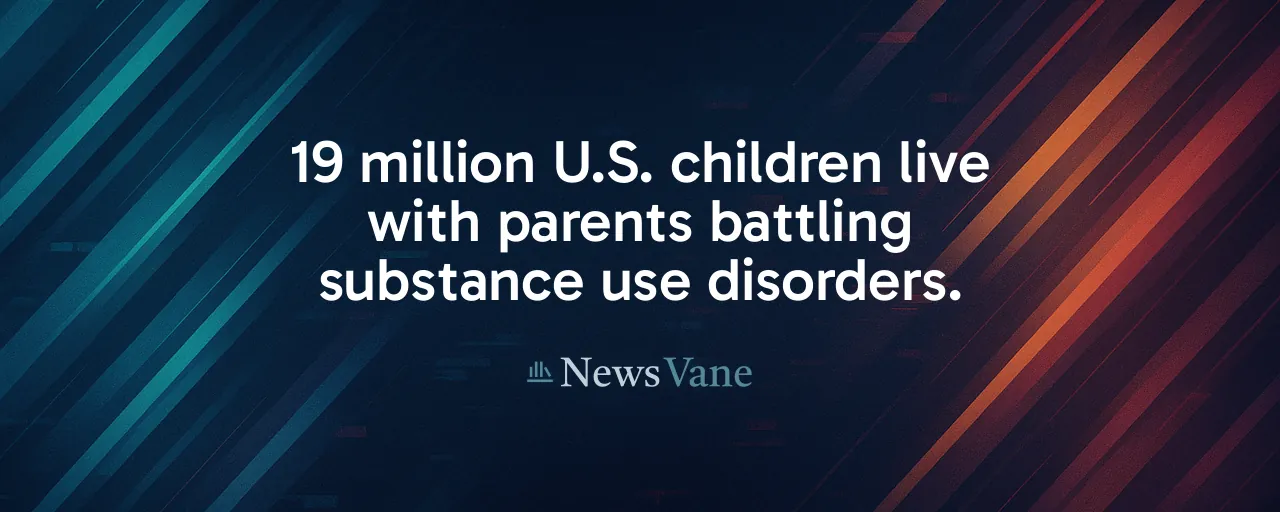A Growing Concern for America’s Families
A 2025 study revealed a startling reality: one in four U.S. children, roughly 19 million, lives with a parent grappling with a substance use disorder. This figure, drawn from the 2023 National Survey on Drug Use and Health, has sparked urgent discussions among policymakers, educators, and healthcare providers. The issue touches every corner of society, from urban centers to rural communities, demanding a response that safeguards children while supporting families.
The numbers reflect a complex web of challenges. Alcohol remains the most common substance involved, but opioids, cannabis, and polysubstance use are rising. Children in these households face heightened risks, including neglect, mental health struggles, and educational setbacks. The ripple effects extend beyond the home, straining child welfare systems and community resources.
Public attention has surged, with federal agencies and pediatric groups framing the data as a wake-up call. The opioid crisis and pandemic-era stressors have amplified the problem, pushing the estimate far above earlier figures of 7 million. Yet, the focus must shift from alarm to action, prioritizing solutions that address both immediate dangers and long-term recovery.
The Stakes for Children and Communities
Children living with parental substance use disorders navigate a precarious landscape. Research links these environments to higher chances of maltreatment and foster care placement. Longitudinal studies show these kids are more likely to develop anxiety, depression, or substance misuse later in life. Schools often see the fallout, with disruptions in attendance and behavior.
Communities bear significant costs. Untreated substance use drives up healthcare and criminal justice expenses, while employers face productivity losses. The societal price tag exceeds half a trillion dollars annually, according to economic analyses. Beyond dollars, the human toll includes fractured families and strained social services.
Child welfare agencies face a delicate balancing act. They must protect children from harm while striving to keep families intact. In 2021, about 81,000 children were removed from homes due to substance-related concerns, highlighting the scale of intervention. The challenge lies in ensuring these actions serve the child’s best interests without deepening family struggles.
Evidence-Based Solutions Take Center Stage
Experts agree that early identification and whole-family interventions yield the best outcomes. Programs like family drug courts, which blend accountability with treatment, have shown promise. These courts monitor parents’ progress while offering support, reducing repeat maltreatment and foster care re-entries. States with robust programs report measurable success.
Parenting skills training and home visitation programs also make a difference. Meta-analyses confirm these efforts help parents manage stress and reduce neglect, buffering risks for children. Family-based residential treatment, where parents and kids stay together during recovery, has lowered hospital stays for substance-exposed infants and improved family stability.
Funding remains a hurdle. The Family First Prevention Services Act of 2018 shifted resources toward prevention, but gaps in treatment capacity, especially in rural areas, persist. Coordinated data-sharing across health, education, and welfare systems is critical but often lacking. Scaling these solutions requires investment and commitment from federal, state, and local leaders.
Balancing Accountability and Support
Debates often center on how to balance child safety with parental recovery. Some advocate for swift investigations and drug testing when abuse is suspected, citing the need to protect vulnerable kids. Others emphasize voluntary, wrap-around services to avoid stigmatizing parents and breaking families apart. Evidence suggests a blended approach works best.
Standardized Plans of Safe Care for substance-exposed infants offer a model. These plans provide voluntary support while reserving investigations for clear threats. Community recovery centers, combining childcare, job training, and peer mentorship, also bridge the gap. Public-private partnerships, including faith-based initiatives, can expand access to these resources.
Historical policies, from the War on Drugs to the 1997 Adoption and Safe Families Act, leaned heavily on punishment. Today’s landscape calls for integration. Programs that pair accountability with accessible treatment outperform those relying solely on one or the other. The goal is clear: protect children while empowering parents to rebuild.
A Call for Collective Action
The crisis of parental substance use demands a unified response. Stakeholders, from healthcare providers to policymakers, must prioritize evidence-based programs that address both child welfare and family recovery. Expanding family drug courts and prevention funding is a start, but closing treatment gaps and improving data coordination are equally vital.
Communities play a pivotal role. Schools, faith-based groups, and local organizations can offer support networks, reducing isolation for families in crisis. Taxpayers and employers, too, have a stake, as prevention and treatment yield long-term savings compared to foster care and incarceration costs.
The path ahead lies in commitment to solutions that work. By investing in early intervention, coordinated care, and family-centered recovery, society can protect its most vulnerable while fostering hope for millions of families. The time to act is now, before another generation bears the weight of this silent crisis.
